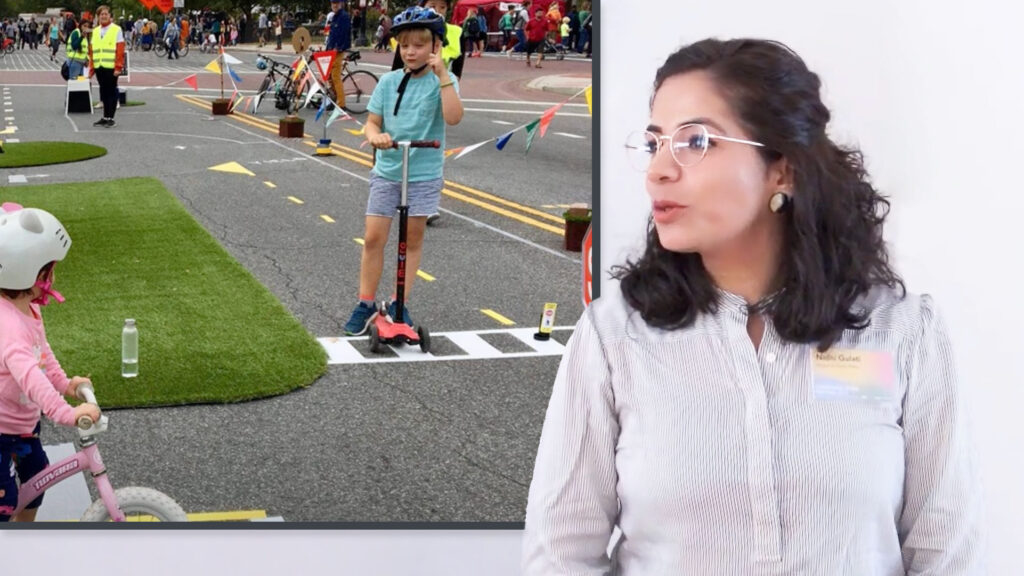Design challenges
In modern society the amount of time allocated to activities under the umbrella of ‘work’ is substantial, and as such much time is being spent within environments that can facilitate such, preferably productive, activities. Many find personal fulfilment from the professions they pursue; too often, however, the prospect of job satisfaction can be significantly dampened or even stifled by inadequate working conditions which could be accounted to a sum of bad management and work culture, but also to physical environment.
The impact of workplace design in this context is significant and as such attention needs to be directed to the built environment as one of the main contributors to positive personal experience. In recent times increasing attempts to improve work space planning through multidisciplinary approaches seem to indicate a positive development in terms of awareness and willingness to address the impact of environment on performance and wellbeing.
Even so, it appears that adequate, universally applicable solutions have not been found; even more so as it appears that many of the new concepts are creating new challenges whilst attempting to resolve old ones.
Some of the most relevant perceived reasons for unsuccessful attempts to implement improvements are as follows: Firstly, one of the main challenges seems to arise at the translation stage from (valuable) new findings into practical solutions. Secondly, it appears that the overall understanding of the surrounding situations in which new concepts are being applied is still incomplete, whereas some areas crucial to the overall success are being left unconsidered within the interplay of related factors. Thirdly, difficulties related to external factors can prevent successful implementation of otherwise valid concepts; i.e. economic considerations can lead to poor trade-offs between cost and effectiveness.
As a result, anticipated positive outcomes can turn out to be significantly impaired, not substantialising at all or even become counterproductive.
The significance of flexibility in the modern workplace
It has been established that flexibility is a must in the modern workplace. Ever changing work practices linked to technological advancement increasingly demand alternative and evolving work spaces. This includes development scope for companies’ restructuring needs, requirements of changing space occupation as well as task related suitability of work environments. More recently yet another topic attracted well-deserved attention in the workplace design industry: the necessity for flexibility linked to individual personality and temperament.
As a driving tool for innovation flexibility found its purpose in the form of accessibility of different work environments and possibilities for increased movement as mental and physical stimulation. In theory the provision of flexibility should lead to better work space management and happier, more productive, more creative work space occupants. In practical terms flexible solutions are increasingly being implemented, with differing, but too often disappointing success rates.
It seems as if there is an underlying feeling of doubt bothering workspace planners and designers, asking themselves why certain solutions don’t seem to work when applied even though the science behind them suggests that they should. Of course, as a new phase of work practices is being explored, a process of trial and error is inevitable. And positively, many improvements have been made with regards to for instance the development of biophilia or increased comfort levels in the workplace through better product design.
However, if there was a way of establishing a deeper understanding which could lead to an acceleration in the establishment of suitable concepts than that would be a great service to the many people which are currently holding out to unsuitable working conditions. The practical reality of limited floor space or the disregard of social and emotional aspects of work environments are prime examples of how economic factors as well as the failure to include all relevant parties and disciplines in the decision making process can account for substantial conceptual maladaptation.
Difficulty with ‘choice’ within group environments
In general choice in terms of autonomous worker engagement1 has been shown to positively influence workplace satisfaction2. However, too much choice can have the opposite effect. The concept of nomadic working3, an idea which amongst others has (re-)surfaced in order to satisfy the need for flexibility, should help to highlight the dilemma.
Even though some few individuals may in fact benefit from far-reaching flexibility, scepticism towards the nomadic working concept is justified when looking at past failed attempts to implement this type of workspace management4.
Too many choices
Challenges often arise in situations in which individuals are presented with dissimilar options to arrange their work environment. Looking at the nomadic working concept it has been proposed that workspace occupants should be provided with a range of different setting in which they could choose according to their requirements. Those settings should then be able to accommodate different working styles and temperaments as well as being best suited to certain task specific activities, i.e. spaces especially designed for solitary, team, collaborative or creative working.
Based on the many possibilities for individual choice this concept should positively impact on workers’ autonomy; however, it also appears that more responsibility than necessary with regards to the structuring of the work environment
may have been shifted to the user and too often those spaces are not being used for what they are intended for, if at all. In order to understand this occurrence one must turn attention to the execution of choice as part of an interdependent process within those settings and the wider situational context.
To begin with, an excessive offer of options can prove undesirable in itself due to the distracting effects of the many considerations that need to be taken into account5. Even though an abundance of choice may be favourable in some situations (i.e. whilst shopping for a new sofa) it can become a burden when the primary interest of the user is not making decisions about furniture arrangements. Having to choose between four different options of sitting arrangements within a work environment can be three options too many, bearing in mind the many other decisions a person has to juggle in their working day. Adding more to that is counter-productive; the user already feels overwhelmed before having even started their actual job.
An almost more impacting role, however, needs to be attributed to the context in which those choices would be executed.
One has to take into account that even though a person is perceived to have free will to make certain choices, these choices are often circumstantial. In the context of a group situation for instance, choices are often handicapped by societal and social norms that either consciously or subconsciously greatly influence one’s actions6. Such occurrences have been thoroughly explored within the field of social science, especially when looking at social psychology and group behaviour studies.
Returning to the example of nomadic working, the surplus of options is most likely to cause indecisiveness7 on part of the individual. In the context of a social environment this can often result in them seeking guidance8 from an influencing group9, which can ease pressures in terms of choice making but might lead to the wrong choice being made in relation to a certain performance related goal.
Another contextually influenced scenario could present itself when the individual has the option to spatially alter their work environment to better suit their temperament. Often they would compromise in favour of the most socially beneficial option10 or balance temperamental disposition against the social context11 in order to divert excessive attention from overly distinguishing aspects of their personality12.
In cultures that support affability for instance this could happen when a person somewhat isolates themselves from the rest of the group as this type of behaviour would be generally stigmatised. By contrast for cultures that favour a more introspective personality, it could become a difficult endeavour to encourage more social behaviours beneficial to collaborative activities. As such, both the provision of adequate privacy and effective team working spaces can prove problematic as cultures generally tend to lean towards one or the other extreme due to self-reinforcing mechanisms of dominant influencers13.
As a result, all of the above scenarios require a state of constant assessment of the situation rather than simply attending to certain activities as would be the case had the individual been unobserved. Additional strain is therefore experienced, detracting from a more productive deployment of energy in other areas14. Emotionally, many of the resulting choices breed frustration and discontent due to the compromised nature of the outcome.
Too little control
The quality of options can be further compromised by the manner in which the space itself is structured and refined. For one this is true when economic considerations require the same work space to be used by more than one person and space occupation forms around changing availability; such situations can lead to an incorrect ratio of dissimilar provisions, limited space availability with similar provision or a combination of both.
Here provisions create unfamiliar settings of a constantly changing surrounding, even if those provisions were similar amongst themselves15. As a result the individual is removed from any consistent reference to a particular environment; emotional attachment to that space, which may be connected to mere physical attributes or social bonds developed within a certain location over time, cannot develop16; this could lead to a decline in connection amongst individuals as well as weakening association of a certain space with the organisation itself – subsequently followed by loss of identification with the organisation’s goals and values.
A challenge that increasingly bothers designers at this point is: ‘If personal space is so important, how can this be reconciled with economically driven requirements of shared space?’
Suggestions range from providing a sense of belonging through better personal care to encouraging people to personalise their working equipment. These proposals are of course always going to help in other areas of workspace management; however with regards to the innate need for personal space they are barely the same thing.
Even though it is worth noting that limited space availability may positively relieve pressures to an extend as one is presented with a smaller selection (see more below on limitation of options), if the return to a familiar setting cannot be guaranteed the subsequent loss of control over the situation can generally not be regarded as ideal. In a workplace situation a person would usually like to know where they are going and what situation they will be encountering when they get there. Not being able to do so is most likely to entail feelings of unease and disempowerment.
In conjunction with design-specific attributes of work space yet another puzzling situation presents itself with regards to the ambiguous effects of distractions – both visual and audible. Findings point to the tendency for people in ‘enriched’ environments to generally outperform those completing tasks in ‘lean’ settings17; whereas enriched spaces could encompass additional visual stimuli through decorations such as plants and art in contrast to lean settings in which those components would be missing.
This is consistent with a recent study that revealed that people are not generally good with being alone with their own thoughts18, suggesting that a complete absence of distraction19 runs the risk of creating a somewhat clinical environment that does not necessarily encourage inward focus but has rather the opposite effect. It would appear that it may not necessarily be the distraction itself that causes decline in productive capability – as adding certain forms of distraction can be more effective than removing them20 – but the lack of control (or choice) over what the distraction is and how or when the distraction is happening.
When choice works
The basic ideas underlying most workplace concepts are generally both commendable and workable; sometimes they only need to be incorporated within a different framework or require a catalyst to become effective. For example flexibility can work well when choices are purely situational i.e. one has only one obvious option in response to a certain situation. Increased autonomy can be achieved when choices are purely non-situational, i.e. one has complete control over the situation. Within both scenarios other influencers are completely overridden by either dominant situational factors on one hand or by their absence on the other.
For instance, even though people generally shy away from reconfiguring modular furniture or moving them around, flexibility can be comfortably taken advantage of when there is a clear, non-disputable purpose attached such as a necessary re-arrangement of sitting provisions when a meeting is to be held. Making furniture modular and/or mobile would generally be advantageous in such situations.
Choice can also be comfortably executed i.e. if lighting needed to be adjusted or windows opened in response to certain physical environmental conditions as opposed to internally felt emotional or psychological reactions to social situations. On the other hand possibilities to personalise and enrich work areas through decorations with pictures and plants are purely personal as they are not forced by a current situation and the individual has full control over how much they would like to reveal about themselves.21
Flexible design principles
For more socially taxing choice making that has a strong situational pull factor22 the following principles are recommended when designing for flexibility within a group environment:
- Increase autonomy through flexibility – the possibility for a choice to be made is there, i.e. provision of adjustable settings
- Increase ease of choice through choice limitation – choices have to be limited to reduce stress on the user whilst taking into consideration a wide array of human factors, i.e. only two options should be possible within one arrangement
- Increase freedom of choice through distortion of intent – the choice that is being made is ambiguous therefore no clear assumption can be made about the purpose of the choice, i.e. the environment can assist in diverting attention from excessively pronounced signals
Starting by combining beneficial elements of past and present concepts whilst taking into account the above principles one could arrive at an outcome that encompasses similar personal workstations within a varied layout complemented by designated activity areas.
This type of configuration relieves pressures by providing a level playground as a starting point. Situations in which one could encompass feelings of discomfort are removed at the onset whereas the possibility for choice is being transferred to complementary spaces that one may or may not utilise; a sense of belonging can develop through familiarity and place attachment within the perimeters of personal area and immediate surrounding, giving back empowerment and control to the person over the situation.
Rather than achieving a more interesting work environment through too many different types of work spaces – which people struggle to choose from – a dynamic layout enriched by design elements that provide more spatial definition can create variety and stimulation. For instance the inclusion of asymmetrical spatial reference points23 can break up monotonous arrangements as well as allowing the eyes to wander24, thus encouraging creative thought processes.
Nuanced differences within provisions could gently point towards conditions that support either inward focus or gravitate more towards relatively ‘open’ environments in order to providing scope for adequate settings tailored to both task and individual temperament. Here it is vital to come up with clever design solutions that blur distinguishing elements in order to simplify the navigation of options.
What are the benefits of designated activity areas?
Firstly a designated activity frees up the user from having to invent a purpose for a certain space each time. Instead a clear activity is linked to a particular space accommodating actions that are socially acceptable25, i.e. having coffee in a café, eating in a restaurant, reading in a library etc. The activity would allow the individual to feel at ease within the space and encouraged to venture out to these areas to seek those welcome distractions. In this manner distractions can be used productively by diverting them onto different platforms that become beneficial (i.e. taking a break) rather than draining (i.e. checking messages).
Secondly collaboration or creativity best occur naturally and unintended. Both divergent thinking which requires an unfocused mind26 and productive collaboration as a type of social learning that thrives on trust and meaningful relationships27 are reinforced through positive emotional states28. By contrast work spaces that are designed for the sole purpose of collaboration or private retreat give out an air of artificially created, forced conditions that do not set the correct atmosphere for the desired outcomes. This ineffective scenario could often be observed when people within fully open plan areas were expected to collaborate merely due to the fact that they all shared the same space.
Based on the stated principles a better way to design for conditions that support an increased receptiveness for a particular intended activity or mind frame that is best achieved when unintended is to clearly assign a different activity to that space and provide scope for further activities to take place29. To achieve this a space should preferably have a primary purpose which is the designated activity, functioning as a type of ice breaker, and a secondary more disguised purpose – whereas the primary activity gives permission or actively invites a person to be in the space and the secondary, more mentally or emotionally taxing activity, most likely requiring an incubation period or catalyst, occurs as the result of the person spending time within that space.
Subsequently the user now encounters a more manageable repertoire of options whilst at the same time being able to execute choices more autonomously and effectively within scenarios that would be otherwise strongly situational. In cases in which space limitations do not allow for sufficient additional activity or require space to be shared to some extent it should nevertheless be possible to find solutions for feasible arrangements with the help of the stated principles.
Freedom of choice within limits
It appears that in order to achieve the best out of flexible workspace arrangements a certain level of structure and informed direction can be more effective than expecting the user to choose from an extensive range of options. This can be achieved by limitation of options, similar provisions in some areas in order to maximise ease of choice, as well as concealing of differences to allow for greater realisation of personal preferences.
Advantages of old concepts such as the overseeable nature of open plan should not be abandoned completely in favour of new concepts. Useful elements should be maintained and improved on with better design solutions, especially with regards to the regulation of privacy and space definition; further incorporating ‘natural elements’ such as access to nature, natural light and fresh air, whilst implementing subtle, non-implicating clues for social interaction or personal retreat.
Complementary (not alternative) designated activity areas can be beneficial to the refocusing and stimulation of body and mind whilst in all areas enhancement of comfort levels and optimisation of provisions for better health management should continue.
In order to minimise errors multidisciplinary approaches should be expanded on even further and economic factors should be considered realistically. Tried and tested concepts should be simplified to universally applicable frameworks that can be easily translated and implemented by the layperson whilst simultaneously providing flexibility for contextual variations.
References
1 Gagné & Deci (2005), Zuckerman (1978) and others: ‘Self-determination theory and work motivation’ – “some external factors such as providing choice about aspects of task engagement tend to enhance feelings of autonomy”
2Baard, Deci & Ryan (2004): ‘Intrinsic need satisfaction’ – “autonomy-supporting contexts promote self-motivation, satisfaction, and performance in various settings”
3The ‘nomadic working’ concept is based on a type of college model, whereas the individual can move around freely without a specifically reserved workspace.
4See ‘Chiat/Day’ Office experiment in the 1990s, where employees were completely stripped of personal space. 5Barry Schartz (2004): “The paradox of choice” – choice is liberating, too much choice is paralysing.
6See ‘Normative social influence’ – alignment of behaviour to social norms in order to increase association with others.
7‘Steelcase’ wellbeing study – 49% of “workers who can’t choose where to work depending on the task”.
8See ‘Informational conformity’ – one seeks guidance from others who one perceives to be able to make more informed decisions than oneself.
9See ‘Social impact theory’- social influence depends on various strengths of influencing factors.
10Goffman (1956) and others – ‘ Dramaturgical perspective’- person as social actor according to their audience
11See ‘Situational behaviour’ versus ‘Dispositional behaviour’
12Ross (1977) and others – ‘Fundamental attribution error’ – occurs when it is overestimated how much another person’s behaviour can be explained by dispositional facts, failing to sufficiently consider the role of situational factors
13Merton (1968): ‘Matthew effect’; Vergne and Durand (2010): ‘The path of most persistence’ – reinforcement of opposing attributes relative to one another
14David Rock (2008): ‘SCARF model’ – “Without prediction, the brain must use dramatically more resources, involving the more energy-intensive prefrontal cortex, to process moment-to-moment experience”
15i.e. a person needs to choose a setting depending on whichever space they are left with
16See ‘Place attachment theory’
17Knight & Haslam (2010): ‘The Relative Merits of Lean, Enriched, and Empowered Offices’
18Timothy Wilson (2014): ‘Just think, The challenges of the disengaged mind’ – experiments concluded that people prefer electric shocks to being left alone with their own thoughts
19With the newly popular ‘privacy booths’ distraction is being completely eliminated through noise cancellation or blocked views in addition to an undesirable reduction of natural air and light
20Mehta, Zhu and Cheema (2012): ‘Is Noise Always Bad?’ – low-level, ambient noise can enhance creativity
21Mischel (1977) – people can express their personality easily in ‘weak’ (social) situations; Also see publication by Byron and Laurence (2014): ‘Diplomas, photos, and tchotchkes as symbolic self-representations’
22 Mischel (1977) – ‘strong’ situations force behaviour into specific channels, preventing adequate expression of personality
23 Forster, Friedman, Butterbach & Sassenberg (2005): ‘Automatic effects of deviancy cues on creative cognition’ – Experiment concluded that participants scored higher in creativity as well as in producing a greater number of solutions through the inclusion of an asymmetrical (as opposed to symmetrical) element (deviancy cue) within their field of view
24Slepian & Ambady (2012): ‘Fluid movement and creativity’ – fluid (as opposed to straight) movement enhances “ability to connect remotely associated concepts”
25Schank and Abelson, (1977): ‘Following a “predetermined stereotyped sequence of actions”’
26Dacey and Lennon (1998): ‘Understanding Creativity’
27Johnson and Johnson (1989) – ‘Social Interdependence Theory’
28Srinivasan Pillay (2011): ‘Your Brain and Business’- in positive emotional states the brain tolerates more openness in thinking and better decision making
29Friedman & Förster (2010): ‘Implicit Affective Cues and Attentional Tuning’ – “focusing attention broadly … on some initial perceptual stimulus may subsequently facilitate … the ability to cognitively activate relatively inaccessible conceptual representations”









